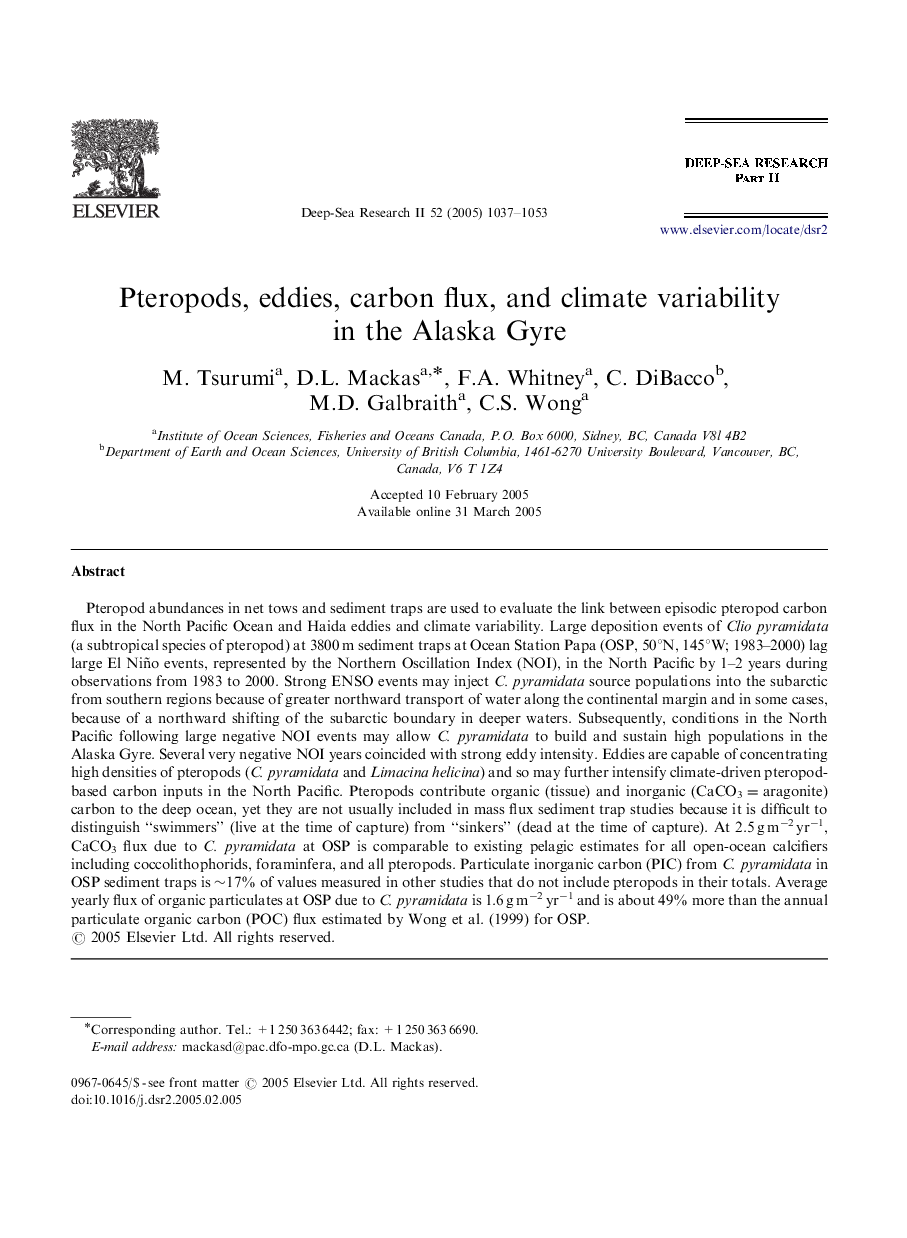| Article ID | Journal | Published Year | Pages | File Type |
|---|---|---|---|---|
| 9480114 | Deep Sea Research Part II: Topical Studies in Oceanography | 2005 | 17 Pages |
Abstract
Pteropod abundances in net tows and sediment traps are used to evaluate the link between episodic pteropod carbon flux in the North Pacific Ocean and Haida eddies and climate variability. Large deposition events of Clio pyramidata (a subtropical species of pteropod) at 3800 m sediment traps at Ocean Station Papa (OSP, 50°N, 145°W; 1983-2000) lag large El Niño events, represented by the Northern Oscillation Index (NOI), in the North Pacific by 1-2 years during observations from 1983 to 2000. Strong ENSO events may inject C. pyramidata source populations into the subarctic from southern regions because of greater northward transport of water along the continental margin and in some cases, because of a northward shifting of the subarctic boundary in deeper waters. Subsequently, conditions in the North Pacific following large negative NOI events may allow C. pyramidata to build and sustain high populations in the Alaska Gyre. Several very negative NOI years coincided with strong eddy intensity. Eddies are capable of concentrating high densities of pteropods (C. pyramidata and Limacina helicina) and so may further intensify climate-driven pteropod-based carbon inputs in the North Pacific. Pteropods contribute organic (tissue) and inorganic (CaCO3=aragonite) carbon to the deep ocean, yet they are not usually included in mass flux sediment trap studies because it is difficult to distinguish “swimmers” (live at the time of capture) from “sinkers” (dead at the time of capture). At 2.5 g mâ2 yrâ1, CaCO3 flux due to C. pyramidata at OSP is comparable to existing pelagic estimates for all open-ocean calcifiers including coccolithophorids, foraminfera, and all pteropods. Particulate inorganic carbon (PIC) from C. pyramidata in OSP sediment traps is â¼17% of values measured in other studies that do not include pteropods in their totals. Average yearly flux of organic particulates at OSP due to C. pyramidata is 1.6 g mâ2 yrâ1 and is about 49% more than the annual particulate organic carbon (POC) flux estimated by Wong et al. (1999) for OSP.
Related Topics
Physical Sciences and Engineering
Earth and Planetary Sciences
Geology
Authors
M. Tsurumi, D.L. Mackas, F.A. Whitney, C. DiBacco, M.D. Galbraith, C.S. Wong,
